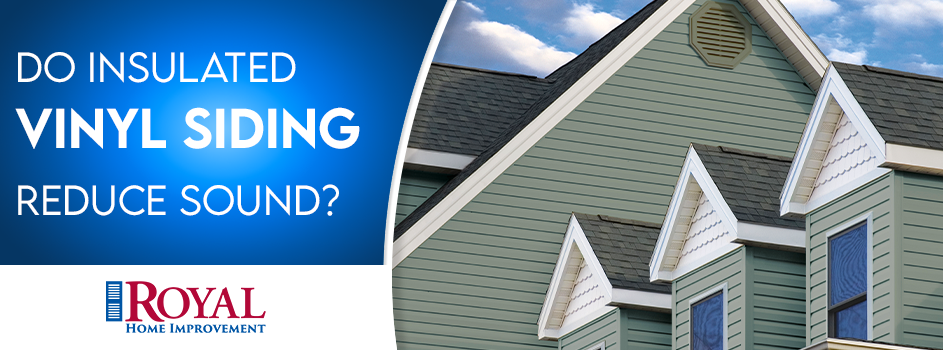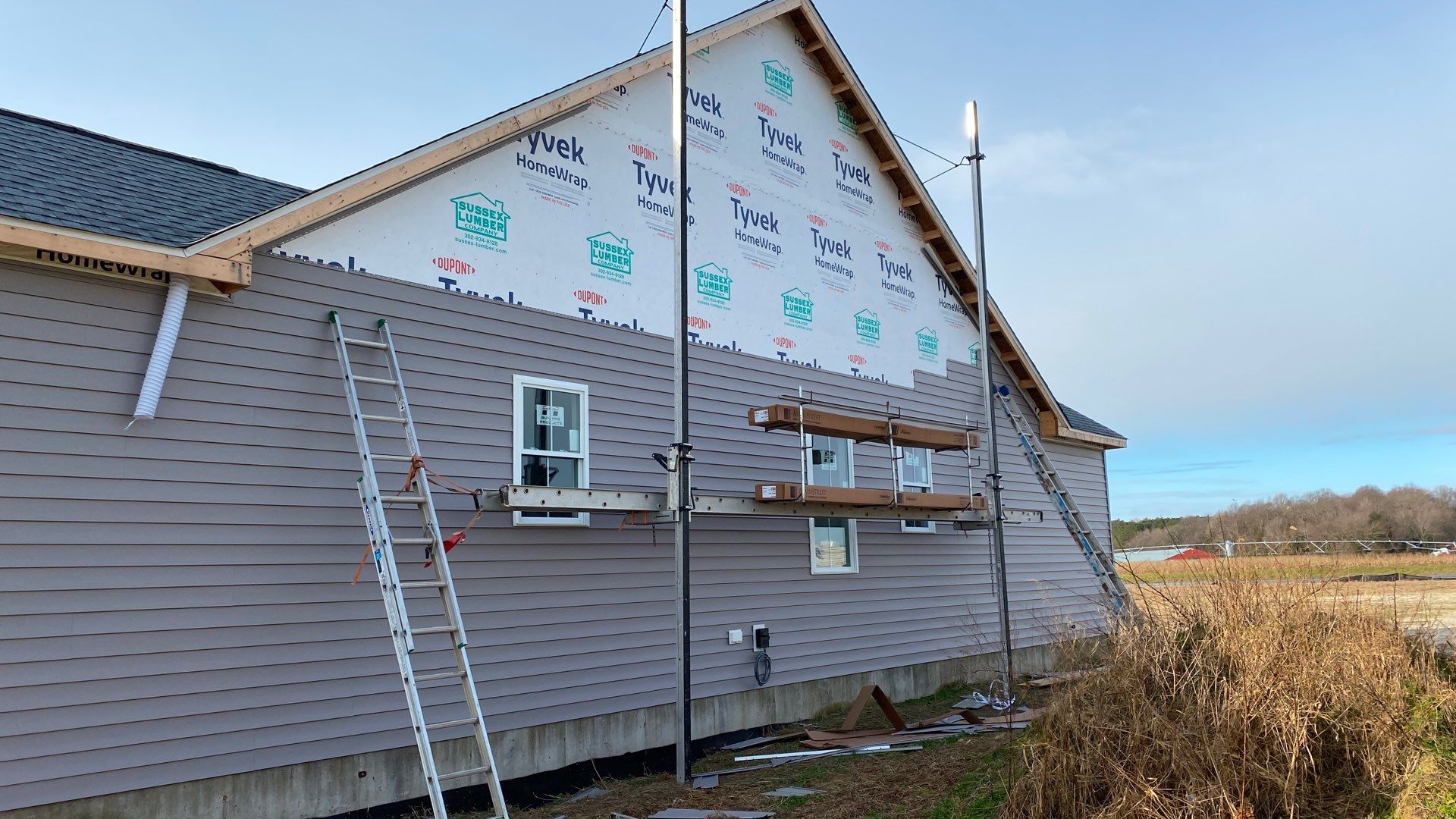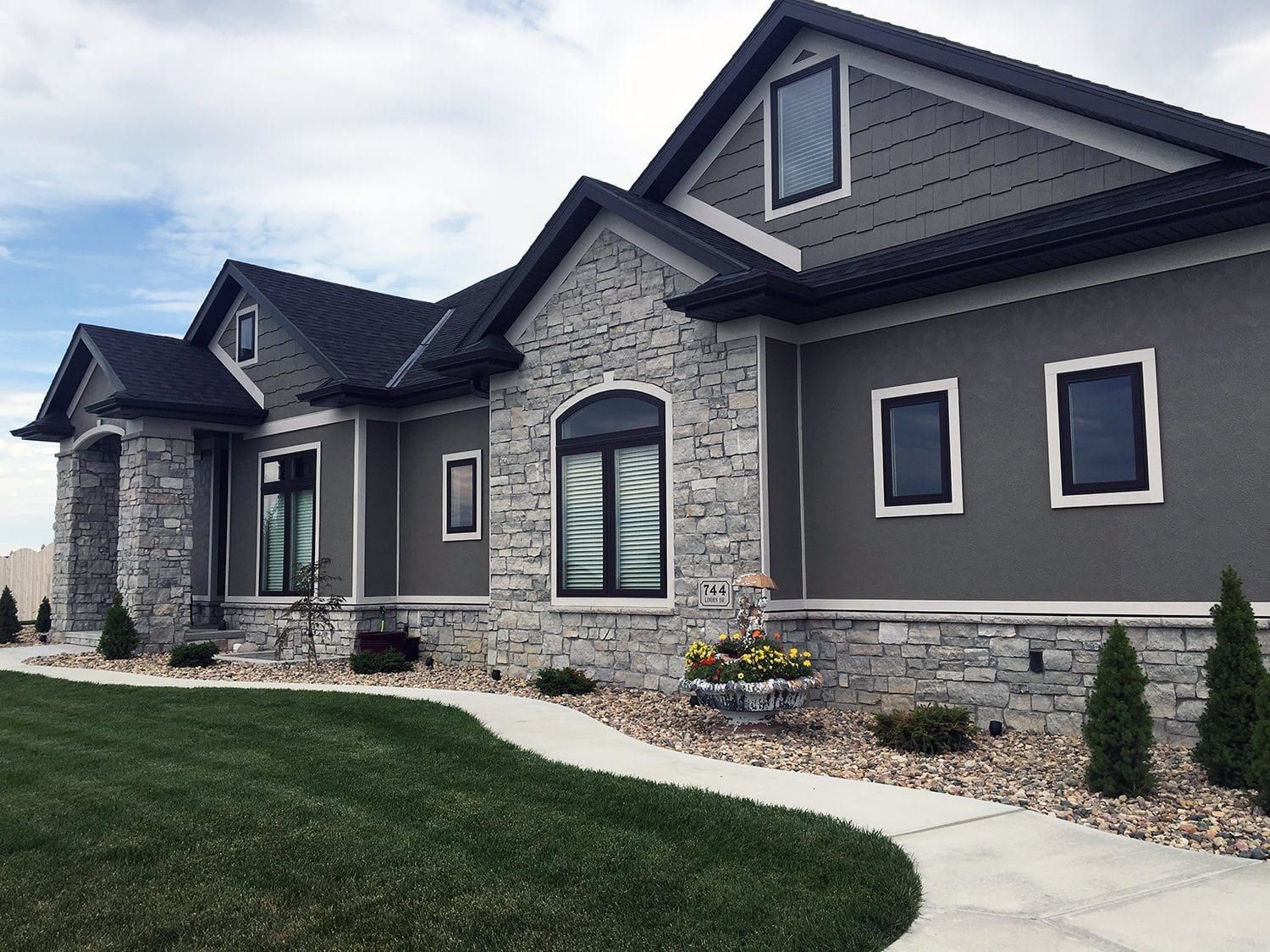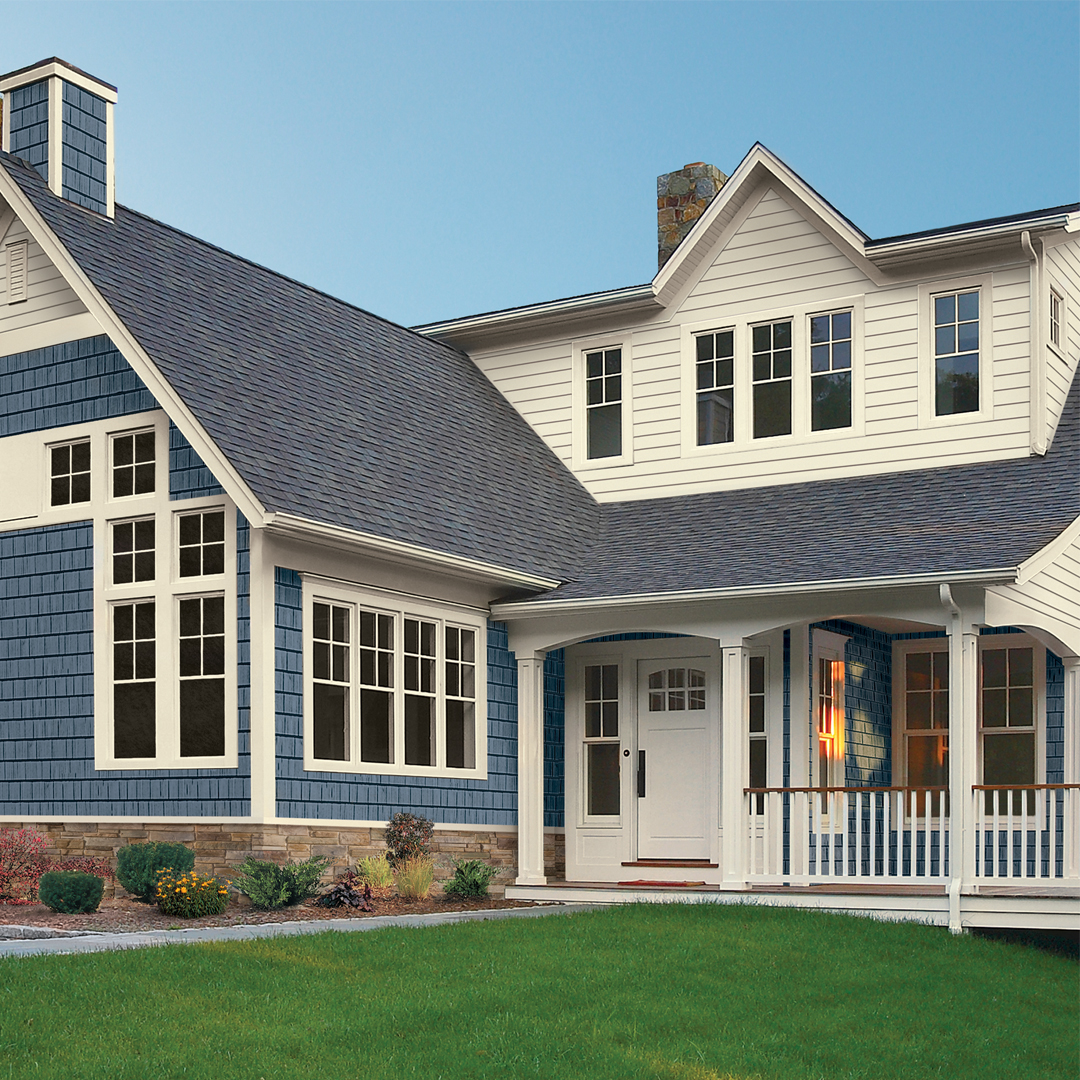Long-lasting Insulated Siding: A Comprehensive Guide
Long-lasting insulated siding represents a significant investment in your home’s exterior, offering a blend of durability, energy efficiency, and aesthetic appeal. This guide delves into the multifaceted aspects of this popular siding choice, exploring its various types, installation processes, maintenance requirements, cost considerations, and environmental impact. We’ll equip you with the knowledge needed to make an informed decision about whether long-lasting insulated siding is the right choice for your home improvement project.
From understanding the different insulation materials and their lifespans to navigating the intricacies of installation and maintenance, we aim to provide a clear and comprehensive overview. We will also explore the long-term cost-effectiveness, energy savings, and aesthetic enhancements that insulated siding can offer, ultimately helping you weigh the benefits against the investment.
Defining Long-lasting Insulated Siding
Long-lasting insulated siding offers a significant upgrade to traditional siding, combining aesthetic appeal with enhanced energy efficiency and durability. This type of siding incorporates an insulating layer directly within its construction, providing superior protection against the elements and contributing to lower energy bills. Understanding the characteristics of different types of insulated siding is crucial for homeowners seeking long-term value and performance.
Insulated siding materials are engineered to withstand the rigors of various climates and weather conditions for extended periods. Key characteristics include resistance to impact damage, moisture intrusion, and UV degradation. The insulating core further enhances these properties by mitigating temperature fluctuations, reducing stress on the siding material itself and minimizing expansion and contraction cycles that can lead to cracking or warping. High-quality insulated siding often features a robust outer layer that provides a protective barrier against scratching and fading, maintaining its appearance for many years.
Insulation Types Used in Siding
The insulating core of insulated siding plays a critical role in its performance. Common insulation types include expanded polystyrene (EPS), extruded polystyrene (XPS), and polyiso. EPS, a lightweight and cost-effective option, offers good thermal resistance. XPS, known for its higher density and improved water resistance, provides superior insulation in wet conditions. Polyiso, characterized by its high R-value per inch, is a premium choice for maximum energy efficiency, although it may be more expensive. The choice of insulation type often influences the overall cost and performance of the insulated siding system.
Lifespan of Insulated Siding Options
The lifespan of insulated siding varies depending on the materials used, installation quality, and environmental factors. High-quality vinyl insulated siding, for instance, can last 30-50 years with proper maintenance. Fiber cement insulated siding, known for its durability and fire resistance, often boasts a lifespan exceeding 50 years. Aluminum and steel insulated siding also offer long lifespans, typically ranging from 40-60 years, though they may be more susceptible to dents and scratches. Regular inspection and maintenance, such as cleaning and minor repairs, are essential to extending the lifespan of any type of insulated siding.
Examples of High-Performance Insulated Siding
Several manufacturers produce high-performance insulated siding systems. For example, CertainTeed offers a range of insulated vinyl siding products engineered for longevity and energy efficiency. Their products often incorporate advanced features like enhanced UV protection and impact resistance. James Hardie, a leading provider of fiber cement siding, also offers insulated options that combine the durability of fiber cement with the energy-saving benefits of integrated insulation. These high-performance systems are often backed by robust warranties, providing additional assurance of their long-term performance. The specific features and warranty terms should be carefully reviewed before making a purchasing decision.
Installation and Maintenance of Long-lasting Insulated Siding
Proper installation and diligent maintenance are crucial for maximizing the lifespan and performance of long-lasting insulated siding. A well-installed system will provide superior insulation, weather protection, and aesthetic appeal for many years, while neglecting maintenance can lead to premature deterioration and costly repairs. This section details the installation process, best maintenance practices, common problems, and necessary tools and techniques.
Typical Installation Process
The installation of long-lasting insulated siding typically begins with thorough preparation of the existing wall surface. This involves removing old siding, repairing any damaged sheathing or framing, and ensuring a level and plumb substrate. Next, furring strips or similar bracing may be installed to create a uniform surface and allow for proper ventilation behind the siding. The insulated siding panels are then affixed to the prepared surface, typically using nails or screws designed for the specific siding material. Each panel is carefully aligned and secured, ensuring proper overlap and watertight seals at joints and corners. Finally, trim pieces and accessories, such as J-channels, corner pieces, and window/door surrounds, are installed to complete the installation. The process requires attention to detail to ensure a professional and durable finish.
Best Practices for Maintaining Insulated Siding
Regular cleaning and inspection are key to maintaining the integrity and longevity of insulated siding. Annual cleaning with a soft brush, mild detergent, and water is recommended to remove dirt, debris, and mildew. A pressure washer can be used cautiously, avoiding excessive pressure that could damage the siding. Regular inspections should check for any signs of damage, such as cracks, loose panels, or water intrusion. Addressing minor issues promptly can prevent them from escalating into more significant problems. Furthermore, maintaining proper ventilation behind the siding helps prevent moisture buildup, which can lead to mold and rot.
Common Problems Associated with Insulated Siding
Common problems associated with insulated siding installation and maintenance include improper installation leading to water penetration, gaps or cracks allowing air infiltration, and inadequate ventilation causing moisture buildup. Poorly secured panels can loosen over time, potentially causing damage during high winds or storms. Neglecting regular cleaning can lead to the accumulation of dirt and mildew, degrading the appearance and potentially damaging the siding material. In extreme cases, untreated moisture problems can lead to rot and the need for extensive repairs or replacement.
Tools and Techniques Needed for Proper Installation
Proper installation requires a range of tools and techniques. Essential tools include measuring tapes, levels, saws (circular saw, hand saw), drills, nail guns or impact drivers, and various fasteners. Specific tools may vary depending on the type of siding being installed. Techniques include precise measurements, careful cutting of panels to fit, proper fastening to ensure secure attachment, and the use of sealant to create watertight seals. Following manufacturer’s instructions and using appropriate safety equipment are crucial for a successful and safe installation.
Step-by-Step Guide for Cleaning and Repairing Insulated Siding
Cleaning:
- Prepare a cleaning solution: Mix mild detergent with water in a bucket.
- Apply the solution: Use a soft-bristled brush or sponge to apply the solution to the siding.
- Scrub gently: Gently scrub the siding to remove dirt and grime. Avoid harsh scrubbing which could damage the surface.
- Rinse thoroughly: Rinse the siding with clean water to remove all traces of the cleaning solution.
- Allow to dry: Allow the siding to air dry completely.
Repairing:
- Identify the damage: Carefully assess the extent and type of damage to the siding.
- Gather necessary materials: Obtain replacement panels or repair materials as needed.
- Prepare the area: Clean the damaged area and surrounding area.
- Repair or replace: Carefully follow manufacturer’s instructions for repairing or replacing the damaged section.
- Seal any gaps: Use appropriate sealant to seal any gaps or cracks to prevent water penetration.
Cost and Value of Long-lasting Insulated Siding
Investing in long-lasting insulated siding is a significant home improvement project, and understanding the associated costs and long-term value is crucial for making an informed decision. The initial investment may seem substantial, but the potential for energy savings, increased home value, and reduced maintenance costs over the siding’s lifespan can significantly outweigh the upfront expenses. This section will break down the cost factors and demonstrate the return on investment associated with this durable siding option.
Factors Influencing the Cost of Long-lasting Insulated Siding
Several factors contribute to the overall cost of long-lasting insulated siding. These include the type of material chosen (e.g., vinyl, fiber cement, engineered wood), the size and complexity of the project (including the area to be covered and the presence of architectural details), the labor costs in your region, and the need for permits and other associated expenses. Higher-quality materials generally command a higher price, but often offer superior durability and energy efficiency, leading to long-term savings. Similarly, complex projects with intricate detailing or extensive preparation work will naturally incur higher labor costs.
Long-Term Cost-Effectiveness of Insulated Siding Versus Other Options
Comparing the long-term cost-effectiveness of insulated siding with other options requires considering not just the initial investment but also the ongoing maintenance and energy costs. While the upfront cost of insulated siding may be higher than that of traditional siding materials, the energy savings resulting from improved insulation can significantly offset this difference over time. For example, a homeowner might see a reduction in heating and cooling bills, potentially saving thousands of dollars over the 20-30 year lifespan of the siding. Furthermore, the reduced need for maintenance and repairs associated with high-quality insulated siding can further contribute to its long-term cost-effectiveness. In contrast, traditional siding might require more frequent repainting, repairs, or even complete replacement sooner, resulting in higher cumulative costs over the years.
Examples of How Insulated Siding Increases Home Value
Insulated siding enhances a home’s curb appeal and energy efficiency, both of which are highly desirable features for potential buyers. Improved aesthetics can lead to a higher asking price, while enhanced energy efficiency translates to lower utility bills for future homeowners, making the property more attractive. For instance, a recent appraisal might show a significant increase in home value after the installation of insulated siding, especially in a competitive real estate market. The increased energy efficiency can also be a significant selling point, potentially attracting buyers willing to pay a premium for a more energy-efficient and environmentally friendly home. Real estate agents often advise homeowners to consider such upgrades to maximize their return on investment when selling.
Cost Breakdown of Insulated Siding Installation
The cost of installing long-lasting insulated siding can vary considerably depending on location and project specifics. The following table provides a general cost breakdown, though it’s crucial to obtain personalized quotes from contractors in your area.
| Material Cost | Labor Cost | Permits | Other Expenses |
|---|---|---|---|
| $5,000 – $15,000 (depending on material and square footage) | $3,000 – $10,000 (depending on labor rates and project complexity) | $200 – $500 (varies by location and project requirements) | $500 – $1,500 (includes things like waste disposal, site preparation, etc.) |
Aesthetic Considerations and Design Options
Choosing long-lasting insulated siding involves more than just functionality; aesthetics play a crucial role in enhancing your home’s curb appeal and overall value. The right siding can dramatically transform the look of your house, reflecting your personal style and complementing your home’s architecture. A wide range of options ensures a perfect match for any taste and architectural style.
Long-lasting insulated siding offers a diverse palette of styles and colors to suit various preferences. Manufacturers provide a wide selection of colors, mimicking the look of natural materials like wood or stone, while offering the superior durability and energy efficiency of insulated siding. The availability of different textures, from smooth to wood-grained, further expands the design possibilities. This variety allows homeowners to achieve a desired aesthetic, whether it’s a classic, modern, rustic, or contemporary look.
Available Styles and Colors of Long-lasting Insulated Siding
Long-lasting insulated siding is available in a multitude of colors, from traditional earth tones to bold and modern hues. Popular choices include various shades of gray, beige, brown, and white, offering a versatile backdrop for any home. Many manufacturers also offer custom color matching services, allowing homeowners to select a color that perfectly complements their existing landscape or architectural details. Styles range from traditional lap siding, mimicking the look of wood clapboard, to more contemporary options like vertical siding or panels that create a clean, modern look. Some manufacturers even offer siding that replicates the look of brick or stone, providing a low-maintenance alternative to traditional materials. For example, a home with Victorian architecture might benefit from lap siding in a deep, rich brown, while a contemporary home could be beautifully accented with sleek, gray vertical siding.
Enhancing Curb Appeal with Insulated Siding
Insulated siding can significantly enhance a home’s curb appeal by providing a clean, uniform, and visually appealing exterior. Replacing outdated or damaged siding with new insulated siding instantly revitalizes a home’s appearance. The improved energy efficiency often translates into reduced energy bills, which can be a significant selling point when it comes to increasing a home’s overall value. For instance, a home with faded, cracked vinyl siding can be transformed with new insulated siding in a fresh, modern color, creating a dramatic improvement in its overall aesthetic appeal. The clean lines and consistent color of the new siding create a sense of order and sophistication.
Integrating Insulated Siding into Various Architectural Styles
The versatility of long-lasting insulated siding allows for seamless integration into various architectural styles. For example, a craftsman-style home might benefit from a natural wood-grain finish, while a ranch-style home might look stunning with horizontal lap siding in a neutral color. A contemporary home could be enhanced by sleek, vertical siding or large-format panels. Careful consideration of color and texture ensures the siding complements, rather than clashes with, the existing architectural details. For example, a colonial-style home could be beautifully accented with white or cream-colored lap siding, enhancing the home’s classic elegance.
Design Considerations for Choosing Insulated Siding
Before selecting insulated siding, several key design considerations should be carefully evaluated. This ensures the final choice enhances the home’s aesthetic appeal and complements its architectural style.
- Home’s Architectural Style: Consider the overall style of your home and choose siding that complements its design elements.
- Color Palette: Select a color that harmonizes with the surrounding landscape, roof color, and other exterior features.
- Texture and Finish: Consider the texture and finish of the siding, choosing options that reflect your personal style and the overall aesthetic you want to achieve.
- Maintenance Requirements: While insulated siding is generally low-maintenance, understand the specific care requirements for your chosen material.
- Long-Term Durability: Select a material known for its long-lasting durability and resistance to the elements.
- Budget: Determine your budget and choose a siding option that fits within your financial constraints.
Warranty and Manufacturer Information
Choosing long-lasting insulated siding is a significant investment, and understanding the warranty offered by the manufacturer is crucial for protecting that investment. A comprehensive warranty provides peace of mind, ensuring that defects in materials or workmanship are addressed, and that your siding will perform as expected for the specified period. This section will explore the importance of warranties and compare the warranty offerings of various manufacturers.
Warranties offered by different manufacturers of long-lasting insulated siding vary significantly in terms of length, coverage, and conditions. These differences can impact the overall cost and long-term value of the siding. It’s essential to carefully review the warranty details before making a purchase decision. Factors such as the type of siding, installation methods, and environmental conditions can also influence warranty coverage.
Warranty Coverage
Manufacturer warranties typically cover defects in materials and workmanship. This means that if the siding itself is faulty – for example, if it cracks, peels, or fades prematurely due to manufacturing defects – the manufacturer will usually repair or replace the affected sections. However, damage caused by factors outside the manufacturer’s control, such as severe weather events (hurricanes, hailstorms), improper installation, or vandalism, is generally not covered. Some warranties may offer limited coverage for issues like discoloration due to prolonged sun exposure, but this often comes with specific limitations and timeframes. For example, a manufacturer might offer a 30-year warranty against cracking and peeling, but only a 15-year warranty against fading. Always carefully read the fine print to understand the specifics of what is and isn’t covered.
Warranty Length and Transferability
The length of a warranty can range from 10 to 50 years or more, depending on the manufacturer and the type of siding. Longer warranties generally indicate greater confidence in the product’s durability. It is also important to consider whether the warranty is transferable to a new homeowner if you sell your property. A transferable warranty adds significant value to your home and provides ongoing protection for future owners. Some manufacturers offer fully transferable warranties, while others may have limitations or require a fee for transfer.
Examples of Manufacturer Warranty Provisions
While specific warranty details vary across manufacturers, common elements include:
- Limited Lifetime Warranty: This is the most comprehensive type of warranty, often covering defects in materials and workmanship for the lifetime of the home. However, this usually comes with stipulations, such as proof of purchase and proper installation.
- 50-Year Warranty: A 50-year warranty provides a significant level of protection, covering defects for a substantial period. The exact coverage details will be outlined in the warranty document.
- Pro-Rated Warranty: With a pro-rated warranty, the manufacturer’s responsibility for repairs or replacements decreases over time. For example, in the first 10 years, they might cover 100% of the cost, but after that, their coverage may decrease to 50% in the next 10 years, and so on.
It’s important to note that these are just examples; the specific terms and conditions will vary depending on the manufacturer and the specific product. Always obtain a copy of the warranty document and carefully review it before committing to a purchase.
Wrap-Up
Investing in long-lasting insulated siding offers a multitude of benefits, ranging from enhanced energy efficiency and increased home value to improved curb appeal and reduced maintenance. By carefully considering the various types, installation procedures, and cost implications, homeowners can make a well-informed decision that aligns with their specific needs and budget. This guide serves as a valuable resource, providing the necessary information to embark on this home improvement journey with confidence.









